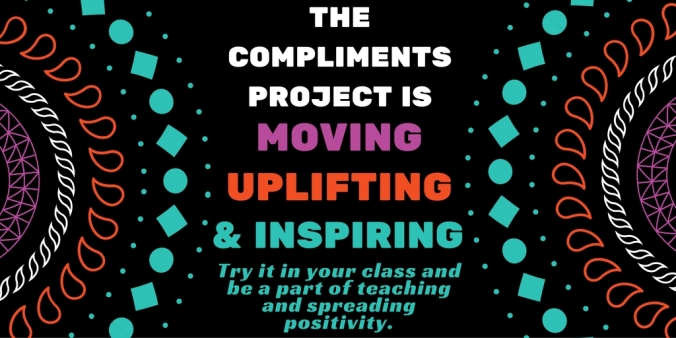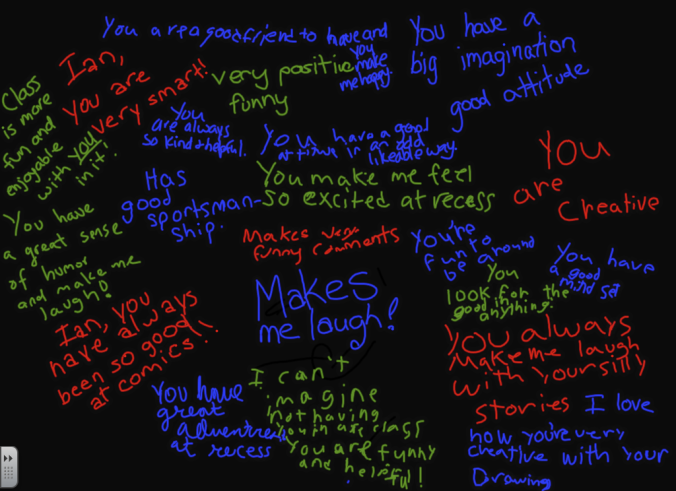The belief “I am not capable” is one of the biggest obstacles I face in my classroom.
Before moving to California, I worked at a middle school in Philadelphia where students’ basic needs weren’t being met. How can students focus on schoolwork/homework when they’re hungry or concerned for their safety?…basic Maslow’s Hierarchy of Needs, right? In spite of this, many students did work hard. They did believe in themselves and they worked hard to persevere. Many of these kids had GRIT and due to the hardships they faced, they developed problem solving skills. Although unsure of themselves at times, they would embark on their work and take risks. Academically, many of these 7th and 8th grade kiddos performed beneath my current 5th graders, but considering the disadvantages, the lack of parental support, encouragement and attention, and their schooling, this is not surprising. Upsetting, yes, but not surprising.
I moved fro m this inner city school in Philadelphia to an affluent community in San Diego. And I’m saddened. While my students in Philadelphia were disadvantaged for the reasons mentioned above, my current students can be disadvantaged as well. However, their disadvantages aren’t financial or socioeconomic; they are the result of other factors. It saddens me because, to me, it seems easily preventable. In the introduction to the third edition of Positive Discipline, Jane Nelson writes,
m this inner city school in Philadelphia to an affluent community in San Diego. And I’m saddened. While my students in Philadelphia were disadvantaged for the reasons mentioned above, my current students can be disadvantaged as well. However, their disadvantages aren’t financial or socioeconomic; they are the result of other factors. It saddens me because, to me, it seems easily preventable. In the introduction to the third edition of Positive Discipline, Jane Nelson writes,
[Parents should pay close attention to] how damaging it is to children when adults do too much for them, overprotect them, rescue them, don’t spend enough time with them, purchase too many things for their children, do homework for their children, nag, demand, bawl out, and then bail out.
The foundation for healthy self-esteem is the development by children for the belief “I am capable.” Children don’t develop this belief when parents do any of these things. Nor do they develop the skills that help them feel capable when they are always told what to do without the experience of focusing on solutions…
Positive Discipline, p. xxiii
The above quote perfectly explains the situation for too many of my students.. Parents, knowingly or not, overstructure and overplan so much of their children’s time, complete their homework for them, do not involve them in decisions, hire nannies to help raise them, rescue them from every conflict, buy their children’s love with things, and handicap their children by the time they arrive in 5th grade.
Of course this isn’t everyone, but it’s enough of a problem to warrant this post. Let me say this, I’m not a parent. Due to this fact, I always want to strike these thoughts, feeling that I have no right to them by not experiencing parenting myself. I understand that parenting is hard and my intent is not to slam anyone. But the point is, I interact with kids, build relationships with them, and see their great need for attention and feelings of inadequacy. I’m analytical and I’ve been cursed as a deep-thinker. So, I have these thoughts, these observations, and their valid whether I’m a parent or not. I’m a teacher, and based on my observations, these are my wishes.
I wish parents could see how capable their children are.
I wish Mom and Dad could be a fly on the wall during class time, so they could see Joe persevere through a seemingly difficult task. I wish Mom and Dad could have the confidence to let him persevere at home.
I wish parents understood wait time.
I wish parents easily understood how children rise to the occasion and seek to perform at expectations.
I wish parents could see the constant encouragement and feedback that sparks a child to believe in himself. I wish they could see and use that fuel at home.
I wish parents could find a balance between leaving their kids to raise themselves and micromanaging their lives.
Instead of over-scheduling play dates, I wish parents would give their kids unstructured play time. I wish parents saw the impact this has on problem solving and critical thinking skills.
I wish parents could hear the disappointment in Kent’s voice when he tells me, “I don’t have any time to read. I have activities until bedtime.”
I wish parents would involve their kids in decisions.
I wish all parents could all see that continuously solving problems for kids prevents them from learning how to solve their own. I wish parents could look far down the road and see what long-term effects this can have. Better yet, I wish parents could see the effects already taking place.
I wish parents would hold home meetings, like we hold class meetings.
I wish all parents read the book Positive Discipline.
I wish Mom and Dad could see how lack of attention at home prevents Amy from tackling work independently at school. I wish they could see how she will only complete work when I’m next to her, even though no help is needed/provided. I wish they could see.
I wish parents would spend valuable time with their kids and talk. I wish Mom and Dad dates were the trend, instead of structured play dates.
I wish parents could see that homework is completely pointless if the student isn’t independently practicing.
I wish parents would always send me a note when reteaching during homework time in necessary.
I wish parents understood that I spend 35 hours a week with their child. We can focus and improve upon skills, but that can be wiped out in one homework session if the encouragement and reinforcement isn’t there.
I wish parents could see the glow in their child’s eyes when I tell them that I believe in them, that they are capable, and I can’t wait to see their finished work.
I wish parents understood the fact that naturally all creatures will take the easier route. If you offer to help, whether needed or not, most students will welcome it.
I wish parents understood that completing assignments for their children helps no one. In fact, it teaches the student that help is needed to produce quality work–it hurts the child.
I wish parents could see how much more capable and equipped students feel when they work through challenges and persevere.
I wish parents could see the satisfaction in the child’s eyes when he completes something independently, the PRIDE.
Parents, I know how capable your child is; I wish you knew and believed it too.
Anyone can develop the “I am capable” attitude. And with home-school cooperation, I’ve see children completely turn around in a school year. It has to be one of the most satisfying shifts to witness as an educator or parent. The “I am capable” attitude will change the course of a child’s life.
In my first paragraph, I said many of students in Philadelphia, “although unsure of themselves at times, they would embark on their work and take risks.” I hope to see a shift in my classroom in the upcoming years. My students in Philly faced many hardships and were required to make many of their own decisions thereby sharpening their problem solving skills. For many, this produced GRIT and work ethic. It’s great that parents who are financially stable can buy gifts for their kids, send them on trips and bring them to playdates at various places, but I HOPE that parents stop minimizing conflict and decisions in their kids lives to the point that some students have never dealt with conflict or making their own decisions by the 5th grade. The effects this has on learning cannot be overlooked. I’m concerned about the future if we fail to foster the skills needed to become creative thinkers, problems solvers, and innovators.
Do you have a wish for parents? Add it to the comments below.
 My class will be participating in the Global Read Aloud this October. We’ll be reading the middle school book, A Long Walk to Water. My kiddos are in 5th grade, but this novel is definitely appropriate for 4th and 5th graders. If you don’t already know about the Global Read Aloud (GRA), it isn’t too late to get on board. HERE is a link to the GRA website for more information. The schedule requires you to read about 3 small chapters a week, so it isn’t overwhelming to add to your plans. With so many classes participating, it is an excellent way to break down the four walls of your classroom and expand your students’ worldview by connecting them with the global community. It’s also an excellent way to generate excitement around reading!
My class will be participating in the Global Read Aloud this October. We’ll be reading the middle school book, A Long Walk to Water. My kiddos are in 5th grade, but this novel is definitely appropriate for 4th and 5th graders. If you don’t already know about the Global Read Aloud (GRA), it isn’t too late to get on board. HERE is a link to the GRA website for more information. The schedule requires you to read about 3 small chapters a week, so it isn’t overwhelming to add to your plans. With so many classes participating, it is an excellent way to break down the four walls of your classroom and expand your students’ worldview by connecting them with the global community. It’s also an excellent way to generate excitement around reading!






 m this inner city school in Philadelphia to an affluent community in San Diego. And I’m saddened. While my students in Philadelphia were disadvantaged for the reasons mentioned above, my current students can be disadvantaged as well. However, their disadvantages aren’t financial or socioeconomic; they are the result of other factors. It saddens me because, to me, it seems easily preventable. In the introduction to the third edition of Positive Discipline, Jane Nelson writes,
m this inner city school in Philadelphia to an affluent community in San Diego. And I’m saddened. While my students in Philadelphia were disadvantaged for the reasons mentioned above, my current students can be disadvantaged as well. However, their disadvantages aren’t financial or socioeconomic; they are the result of other factors. It saddens me because, to me, it seems easily preventable. In the introduction to the third edition of Positive Discipline, Jane Nelson writes,